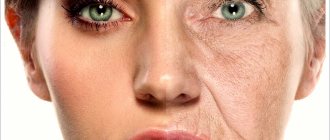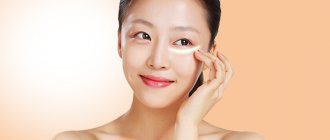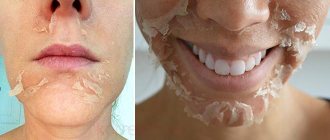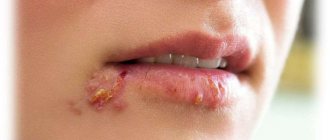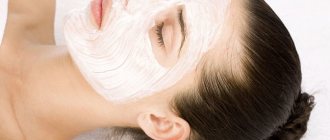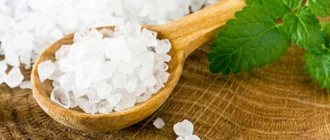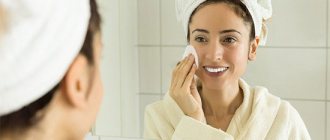What products to use after peeling at home
The cosmetologist who performed the procedure will most competently advise you on how to care for your skin after peeling.
These may be products available in the salon, or that must be purchased in the public domain. If the procedure was carried out at home, then it is quite easy to decide what products to use after peeling by contacting the cosmetic brand PLEYANA. Its line includes a wide range of external products with both moisturizing and nourishing effects. The most popular of them:
- Hydro-gel with Aloe Vera. Its components help restore water balance and have a healing and soothing effect. Since the product is suitable for all skin types, it is actively used at home;
- Biorevitalizer serum with peptides. Belonging to a new cosmetological direction, neurocosmetics, the product has a pronounced anti-aging effect comparable to collagen injections;
- For skin prone to oily skin, the ST-CONTROL sebum-regulating alginate mask with sea silt and essential oils is effective.
After peeling, it is better to use a cream that contains components aimed at moisturizing the skin and speeding recovery. The studies conducted indicate that they should contain the following compounds:
- Panthenol;
- Wax;
- Lanolin;
- Antioxidants;
- Ceramides;
- Phospholipids;
- Natural oils.
Basic Tips
Skin care before and after facial cleansing in the salon
Regardless of the depth of cleaning, special facial skin care is required at the end of the procedure. Not only the duration of the recovery period, but also the quality of the result depends on how seriously you take the cosmetologist’s instructions.
And if you have not yet decided on the choice of procedure or have not listened carefully to the recommendations of a specialist, then study the universal advice.
You may also be interested in: How to remove eyelash extensions at home
Care based on recovery time
The rehabilitation period lasts on average 2 weeks. Immediately after the procedure, in the first 12-24 hours, refrain from:
- contact with water
- touching the skin
- using moisturizers
- contact with UV rays
In the next 2-3 days, limit:
- using oily moisturizers
- time spent outside
- physical exercise
In the remaining time until full rehabilitation occurs, avoid:
- using decorative cosmetics that clog pores
- visits to the bathhouse, sauna and solarium
- the use of exfoliating products, including gommage masks
- desire to quickly get rid of dead particles and crusts formed
You may also be interested in: Why the skin under the eyes peels and how to deal with it
Cleansing
Exfoliation is not a reason to refuse further cleansing. Microdamages and cracks resulting from chemical exposure can become conductors of serious skin diseases.
Make it a rule to use anti-inflammatory, soothing and moisturizing cleansers a couple of days after peeling. They can be in the form of foam or gel. A cosmetologist will advise you on specific options based on your skin characteristics.
Also take care to keep your hands clean. Especially if it’s difficult for you to give up the habit of straightening your hair every now and then. Use antibacterial soap or wipes several times a day.
You may also be interested in: How to remove henna from eyebrows after dyeing
Hydration
Peeling not only eliminates imperfections, smooths out fine wrinkles and evens out facial tone, but also undermines the lipid balance of the epidermis.
That is why, starting from the second day after cleansing, use moisturizers. Give preference to gels and fluids with a light texture. Unlike creams, they do not require rubbing and instantly saturate the skin with the necessary moisture.
Starting from the third day, you can switch to oily textures - creams, balms or serums.
Before applying the cream, use thermal or mineral water. This will allow the cream to absorb faster and not stretch thin skin.
Pay attention to the composition of moisturizers. It is best if they are marked for sensitive skin
No? Then choose those that contain hyaluronic acid and antioxidants.
Another useful article: What does camphor oil help with?
Protection
Thinned and damaged skin is more susceptible to ultraviolet rays. Even a five-minute walk on a sunny day can lead to burns or age spots on the face. Cosmetologists advise using sunscreens labeled SPF 30 or higher.
Strong winds and low temperatures will also have an adverse effect on the skin - increased redness and flaking. Therefore, choose the autumn-spring period for peeling.
Types of superficial peeling
Superficial peeling is a peeling that acts exclusively on the upper layers of the epidermal layer of the skin. Using this procedure, acne, blackheads, inflammation are removed, and the skin is “renewed”. This type of peeling is perfect for young skin. This procedure can be carried out both at home and in a beauty salon. Next, we will look at the main types of superficial facial peeling.
Almond
It is considered one of the most gentle and safe for the skin. The active substance used during this manipulation is based on bitter almond oil. The procedure is carried out using a special solution, which is applied to the entire surface of the face with a hard brush. After 5-10 minutes, the composition is washed off with an alcohol wipe. Recovery takes about 4 days. Cosmetologists advise using healing ointments (Bepanten, Panthenol), wiping the face with essential oils (for example, grape seed oil), avoiding the use of cosmetics during rehabilitation, and washing only with warm water.
Fruit
It includes cleansing the face using a composition based on various acids found in many fruits (for example, citrus fruits, pineapple, apple, strawberry). Before the procedure, remove makeup from the surface of the skin, then apply a fruit-acid mixture, leave for 10-15 minutes, and wash off with an alcohol wipe. The rehabilitation period is minimal (on average it takes from 5 to 6 days). During this period, the following recommendations must be followed:
- stop using decorative cosmetics for a week;
- avoid direct sunlight on the skin;
- In the morning and before bed, lubricate your face with anti-inflammatory gels and ointments (Bepanten, Panthenol, Baneocin).
Laser
It is carried out using a special device - a laser. A thin gel mask containing carbon is placed on the face. Then, under laser irradiation, this composition is heated, due to which it penetrates into the upper layer of the epidermis and removes impurities and various harmful substances. The duration of the manipulation is about 15 minutes. At the end, the skin is lubricated with moisturizer. The rehabilitation process usually takes about 7 days. In the first day, small crusts may form on the face, which indicates the beginning of healing of the skin. During this period, you need to give up decorative cosmetics, wash your face with cool water without any products, lubricate your skin with cooling ointments or gels (Menthol, tea tree extract, Geparir, Baneocin).
Skin care products should gently cleanse and not injure
Ultrasonic
It is carried out using an ultrasonic wave that penetrates the upper layer of the epidermis and removes dead cells, as well as various impurities. As such, rehabilitation is not required: for 2 days, stop washing with scrubs, visiting a solarium, and also wipe your face with moisturizing foams.
Retinol
Retinol or yellow peeling is a cosmetic procedure in which vitamin A analogs, retinoids, are used to cleanse the skin. These substances are sold in the form of ampoules. Before peeling, the face is cleansed, then a vitamin composition is applied and left for 10-15 minutes. Then wash off with warm running water. Retinol peeling is quite gentle, so there are no special recommendations for skin care. The most important thing is to try not to irritate the surface of your face with various scrubs and decorative cosmetics in the first few days. You can also wipe your skin with tea tree essential oil or rosemary oil.
Lactic
It is carried out using lactic acid products, for example, yogurt, kefir, sour cream. A special mask is made based on lactic acid, which gives excellent cleansing and rejuvenating results. The procedure lasts about 10-15 minutes. After this manipulation, slight redness and peeling may appear on the skin, which usually disappears within 2-3 days. These days, it is recommended to refrain from visiting the bathhouse, sauna, solarium and gym, and also from using decorative cosmetics. Before going outside, be sure to lubricate your skin with sunscreen.
Glycolic
Gently cleanses and moisturizes facial skin. This procedure is absolutely harmless and gentle. Glycolic peeling is performed as follows: glycolic acid is applied to the skin using a hard brush for 10-15 minutes, then it is washed off with water. In the first 1-2 days, try to avoid being in direct sunlight, be sure to use sunscreen sprays and creams, moisturize and nourish the skin. The use of decorative cosmetics is partially permitted (mascara, eyebrow pencil, lipstick).
With calcium chloride
Typically a 5% solution of calcium chloride is used, which is diluted in water. This procedure can be performed at home. Apply a little mixture onto a cotton pad and spread evenly over the entire surface of the face. Leave for 10 minutes. Then rinse with water and apply moisturizer to your skin. Salon-type chloride peeling is performed in approximately the same sequence. The rehabilitation period takes about 3-4 days. After completing the procedure, it is recommended to temporarily refrain from using decorative cosmetics (the only exception may be lipstick), lubricate the skin with special healing ointments and creams (Bepanten, Baneocin, Panthenol) in the morning and before bedtime, and wash with cool water.
the skin after cleansing is tender and vulnerable, choose cosmetics on the advice of a cosmetologist
Why is it needed?
Face mask with egg and lemon
During any type of peeling, the hydrolipid layer of the skin is destroyed, gluing together the keratinized scales of the upper layer of the epidermis. During mechanical cleansing (ultrasonic or microdermabrasion), part of the fat layer still remains on the skin. But after ablative laser or chemical treatment, it is completely removed.
Having lost its natural protection, the skin becomes very sensitive to any negative external influences: temperature changes, wind, high humidity, ultraviolet radiation, etc. Accordingly, it is easily irritated and inflamed, which often provokes various side effects.
Therefore, post-peeling care has two main goals: additional protection and hydration. These are the ones that need to be addressed with one or more different creams.
In this case, any cosmetics will not work. You will have to choose it based on your skin type and the type of peeling performed.
Skin care depending on peeling
Paraffin face mask why cosmetologists recommend it so much
Regarding the degree of penetration of acids, chemical peeling is divided into several types - from gentle to deep. The stronger the effect on the skin, the more thorough and longer the post-peeling care should be carried out. Considering this important feature, remember what kind of care your skin will require from you.
It will also be useful: Dyeing eyebrows with henna at home
Surface
This is one of the most gentle peelings, which is used to remove dead skin particles from the top layer of skin. The recovery period is minimal, and care is quite simple.
- For the first day after the procedure, do not touch your face. Any chemical peeling consists of acids that literally burn away all imperfections. As a result, microdamages are formed through which infection can penetrate. The more often you touch your face, the more likely you are to harm your already exhausted skin.
- Buy bepanten, panthenol or other cream that promotes regeneration at the pharmacy. It will get rid of burning and tightness, speed up the recovery process, and prevent the formation of inflammatory processes. Apply the product in a thick layer, let it absorb for 15 minutes, and remove the excess with a cosmetic napkin. Carry out similar procedures at least three times a day.
- Use your usual facial care products. There are no restrictions. The only advice is to choose cosmetics that restore lipid balance.
- Limit the use of foundation. This is not a taboo, but rather a recommendation that will help quickly restore normal skin condition.
Median
The recovery process after a mid-peel can take up to 14 days, provided proper care is taken. Therefore, if you don’t want to go through the whole month with a red and swollen face, follow these rules:
Forget about the usual water procedures. Only on the fourth day after peeling can you rinse your face
Before this, you will have to be careful and wipe your eyes and lips with a damp cloth. But on the contrary, you can drink more water
From the inside, it will promote cell renewal.
Stock up on anti-burn or regenerating creams. You can use the same bepanten or ask your cosmetologist for another effective remedy. As soon as your face begins to tighten, apply the cream in a thick layer and keep it on as a mask for at least 20 minutes. Repeat the action every 2 hours.
Never try to tear off dead skin. It will peel, peel, and ruin the whole look. Don't give in to provocations. The most you can do is cut it off with nail scissors. Otherwise, you will damage the updating layer.
Use sensitive skin care products.
Avoid decorative cosmetics completely. You can tint your eyes and lips.
Watch this useful video that gives practical advice on care during the post-peeling period:
Retinoic
This is a variation of medium peeling, which cannot be confused with anything else due to the yellow complexion at the end of the procedure.
Do not be afraid. The yellow color gives a special cream that determines further care. It's simple:
- Ask your cosmetologist how long it takes to wash off the cream, and strictly follow the instructions.
- Despite the fact that after the procedure the skin will roll down and not peel off in patches, do not try to exfoliate it. Scrubs and gommages are prohibited.
- You can use decorative cosmetics, but it is better to refrain.
Deep
The most complex and painful type of peeling, which penetrates into the deep layers of the epidermis. The rehabilitation period requires supervision by cosmetologists and strict adherence to the rules.
- Ask a specialist to immediately prescribe the necessary antibiotics to reduce the risk of wounds becoming suppurated, as well as the development of infectious diseases. Take care of painkillers too.
- Refrain from water treatments for a while. Which? Check with a specialist. It all depends on the type of peeling.
- When going outside, use sunscreen. The duration of use can vary from six months to life, depending on the characteristics of the procedure.
- Review your diet. Eat foods that contain proteins, including gelatin. For example, fish or chicken. You can also add Omega-3 and other polyunsaturated acids to your diet.
It’s easy to combine business with pleasure. It is enough to follow all the recommendations and do not hesitate to ask questions to the cosmetologist. Healthy skin is the result of your efforts.
- The complexion has turned yellow - what is the reason?
- Removing papillomas at home: popular pharmacy and folk remedies
- How to wash your face with eyelash extensions
- Why wipe your face with ice?
Types of medium peeling
Medium peeling is considered a more serious cosmetic effect on all layers of the epidermis, including fine wrinkles. This procedure is carried out exclusively in salons under the guidance of an experienced cosmetologist using various aggressive scrubs and products that remove deep impurities and also rejuvenate the skin.
Coral
This is a procedure during which a so-called coral scrub is used, consisting of crushed coral particles and beneficial natural herbs. The finished composition is applied to previously cleansed facial skin. Lightly massage. Leave for 20 minutes. Wash off with warm water and lubricate the skin with a moisturizer. A few hours after this manipulation, slight redness and peeling may occur on the face. To speed up healing, wipe the skin with a weak solution of vinegar (1 tablespoon of 9% vinegar per 1 liter of water), as well as various moisturizers. After 2-3 days, wash your face with baby soap and continue to lubricate your skin with creams. During the rehabilitation period, refrain from using decorative cosmetics, visiting a solarium, bathhouse, sauna and swimming pool.
Diamond
It is carried out using various diamond-coated cleaning attachments. This procedure is considered one of the most gentle among the medium types of peeling. The previously cleaned and moistened area is massaged for 15 minutes. Then apply a moisturizer to the skin. In the first day, slight redness may appear on the face. After diamond peeling, it is necessary to lubricate the skin daily with medicinal ointments or gels (Bepanten, Heparin ointment, Curiosin), refrain from using decorative and alcohol-containing products, limit prolonged exposure to the sun or frost, and do not visit the solarium, swimming pool, baths and saunas.
Gas-liquid
Special products consisting of various salts, abrasives and vitamin mixtures are sprayed onto the surface of the skin under high pressure. During the procedure, the patient feels a slight tingling and coolness on the skin. Its duration is about 15 minutes. Taking care of your face is quite simple. To do this, lubricate your skin with moisturizing creams, temporarily give up decorative cosmetics, visiting a solarium, swimming pool, or gym. Rehabilitation usually takes 3 to 4 days.
Cryopilling
Cryopilling is the treatment of various facial skin defects using liquid nitrogen. The procedure allows you to remove dead epithelium, remove facial wrinkles, rejuvenate and refresh the skin. Cryopilling is carried out with a special device that delivers a stream of nitrogen. Its duration is about 2 hours. The rehabilitation period ranges from 1 to 2 months, which consists of completely abandoning the use of decorative cosmetics and using special moisturizers (olive oil, sunflower oil, various creams). If blisters and redness appear at the site of nitrogen exposure, it is recommended to apply medicinal ointments and gels (for example, Levosin, Lincomycin ointment, Dimexide). If pain occurs, it is recommended to consult a cosmetologist or dermatologist.
Radio wave
This is a radiofrequency effect on the skin of the face. The wave penetrates the epidermis layer and removes dead, lifeless cells, as well as various impurities, including blackheads. This procedure is carried out within 20 minutes. After this, the skin is treated with moisturizing cream. Rehabilitation consists of avoiding decorative cosmetics for 2-3 days, as well as protecting the skin from ultraviolet radiation.
Important steps in post-peeling care
The chemical peeling procedure does not end at the beauty salon. After a visit to a cosmetologist, the skin faces a complex and painstaking recovery process, and even complications are possible.
In the first week after chemical peeling, visible changes occur on the face:
- Skin redness (erythema) of varying degrees. The duration and intensity of redness is affected by the type of cleansing and its depth. A red face can be observed from several hours to several days.
- Peeling. Its intensity also depends on the cleansing technique used. For example, after glycolic peeling, peeling is pronounced; it appears on the 3rd day after exfoliation and will last up to 7 days. And after peeling with lactic acid, severe peeling is not observed, the recovery process proceeds gradually, without the formation of a film or crusts on the face.
- Swelling of soft tissues. This defect is typical for those with very sensitive skin types. Swelling often appears in the neck and décolleté, under the eyes, where the skin is thinner and more sensitive to aggressive acid exposure.
- Skin pigmentation. One of the side effects after medium and deep peeling with acids is darkening of the skin. Once the peeling is complete, the problem will go away on its own.
These side effects are quite expected. To ensure that the rehabilitation period is limited only to them, it is recommended to follow the cosmetologist’s instructions for skin care after exfoliation and use special cosmetics with moisturizing, bactericidal and wound-healing properties.
Features of products after deep peeling on the face
Deep peeling is a powerful procedure that is always associated with damage to the layers of the dermis and an inflammatory reaction. To avoid “unexpected” side effects during the rehabilitation period and alleviate the condition, local anti-inflammatory drugs are additionally used. They reduce facial swelling, pain, and reduce the risk of infection.
If after superficial and medium peeling of the face you can wash your face after 6-12 hours, then the use of such aggressive compounds as trichloroacetic acid and deep Jessner peeling makes it undesirable for water to enter within 24 hours. The requirements for protection from UV rays are also increased here - you need to use cosmetics with a protective factor of SPF 50 for several months.
Deep peeling inevitably causes dehydration of the facial dermis, it loses moisture, becomes dry, and tightens. That is why a moisturizing program using professional cosmetics is a necessary part of care after deep peeling.
Results and discussion
1 day after peeling, pronounced signs of skin irritation were observed. At the same time, the most significant skin changes were observed in patients after coral and retinoic peels (groups 1 and 2, respectively) both in terms of the severity of individual symptoms (erythema, swelling) and in terms of the total score. During the same observation period, facial skin after retinoic peeling was characterized by severe peeling. Less pronounced changes were noted after glycolic peeling (Table 2).
The use of cosmetic products from the Aisida series had a beneficial effect on the condition of facial skin in the post-peeling period. The results of assessing skin manifestations suggested good effectiveness of cleansing milk and cream for dry and sensitive skin. During the dynamic observation, features were identified both in the duration of the manifestation of symptoms of inflammation and skin regeneration, and in the degree of their severity, depending on the peeling option performed. Thus, after coral, retinoic and glycolic peeling, a complete absence of skin symptoms was noted on days 6–8; erythema and swelling, reflecting the inflammatory process in the skin, disappeared on days 4–6. On the 4th day of observation (3rd day of Aisida use) in women after retinoic peeling (group 2), the severity of erythema and swelling on the facial skin decreased with signs of moderate peeling; after coral peeling, pronounced peeling was observed with a significant decrease in erythema and swelling; Patients after glycolic peeling experienced only moderate peeling. On the 5th day after peeling (4th day of using Aisida), flaking of the skin persisted in patients of the 1st and 3rd groups, and pasty skin on the background of moderate flaking and mild erythema in patients of the 2nd group (Table 2).
| Symptom | Symptom severity, points | |||
| 1 | 2 | 3 | 4 | |
| Erythema | Minor | Moderate | Expressed | Expressed |
| Swelling | Pastosity | Lightweight | Moderate | Expressed |
| Peeling | Lung | Moderate | Expressed | Expressed |
Table 1. Criteria for assessing the local status of the skin during post-peeling care.
| Group | Symptoms | Time after peeling, days | |||||
| 1 | 3 | 4 | 5 | 6 | 7 | ||
| 1st groupCoral peeling | Erythema | 3,0 | 3,0 | 1,8±0,4* | — | — | — |
| Swelling | 2,7±0,3 | 3,4±0,3* | 1,2±0,2* | — | — | — | |
| Peeling | 3,0 | 1,2±0,2* | 3,0* | 2,2±0,3* | — | ||
| Total points | 8,7±0,3 | 7,6±0,3* | 6,0±0,4* | 2,2±0,3* | — | ||
| 2nd groupRetinoic peeling | Erythema | 3,0 | 3,0 | 2,7±0,3* | 1,4±0,3* | — | |
| Swelling | 3,6±0,3 | 3,3±0,3 | 1,4±0,3* | 1,0 | — | ||
| Peeling | 2,9±0,2 | 1,4±0,3* | 3,0* | 3,0 | 1,0* | ||
| Total points | 9,5±0,3 | 7,7±0,4* | 7,1±0,4 | 5,4±0,3* | 1,0* | ||
| 3rd groupGlycol peeling | Erythema | 1,2±0,3 | 1,0 | — | — | — | — |
| Swelling | 1,1±0,1 | 1,0 | — | — | — | — | |
| Peeling | 3,0 | 1,3±0,3* | 3,0* | 1,0* | — | — | |
| Total points | 5,3±0,3 | 3,3±0,3* | 3,0 | 1,0* | — | — |
Table 2. The severity of skin symptoms during the period of post-peeling care with products from the Aisida cosmetology series (X±m). Note: X is the average value, m is the standard error of the mean; *p
What problems can you encounter after the procedure?
Peeling
This is a normal, expected reaction of the skin to the removal of the stratum corneum of the epidermis. The absence of peeling indicates a poorly performed procedure that will not produce results.
Even superficial peeling cleanses well, tightens pores, which gives a feeling of tightness and dryness. The face may begin to peel on the second or third day after exfoliation.
Redness
The intensity of hyperemia depends on the depth of exposure.
With a superficial procedure, redness lasts no more than 4-6 hours. With a median - from five to seven days.
After deep cleansing, the hyperemia gradually disappears over 3-6 weeks.
Redness appears immediately after exposure. In order not to provoke its intensity, it is recommended to avoid situations that cause a rush of blood to the face - these are:
- intense physical activity (weight lifting);
- stress;
- consumption of spicy, pickled foods, alcoholic beverages.
Edema
Slight swelling and swelling occurs immediately after the procedure. Most often, this is observed with thin, sensitive skin - this is a normal reaction, about which a good specialist warns the client in advance.
The recovery time for the skin varies from person to person. For some, the swelling goes away within a day, for others it takes a longer period of time.
It all depends on individual characteristics, medications that eliminate tissue swelling and accelerate the healing of damage.
Pimples
Multiple inflammatory rashes after a cleansing procedure are abnormal. They indicate either an incorrectly selected cleaning method or neglect of post-peeling care.
In some cases (when problem skin is peeled), the appearance of pimples and acne can be predicted by a cosmetologist; the client is warned about this in advance.
Allergic rash
A good professional cosmetologist will completely exclude such a side effect, since on the eve of the peeling the master conducts an allergy test.
Otherwise, the client's skin may give such a reaction to any peeling component.
Pigmentation
Freckles and age spots after peeling can occur in two cases:
- improper preparation for the procedure;
- carrying out exfoliation during the solar season.
No special preparation is required for superficial peeling. For medium and deep treatments, a week before the main procedure, the client independently treats the skin at home daily with a weak concentrate of glycolic acid.
It is recommended to exfoliate in late autumn or winter, during the period of least solar activity.
You can read about the preparation, implementation and effectiveness of various peelings in separate articles on our website. Read about these types:
- carbon,
- hyaluronic,
- laser.
Hard crusts, scar tissue and scars
Medium and deep peeling affects three of the five layers of the dermis. After such procedures, the skin receives a controlled second or third degree burn.
During the recovery period, hard crusts form on it. If you treat them and wait for them to go away on their own, there will be no side effects.
If you try to speed up this process and remove hard crusts yourself, scar tissue and scars will form in their place.
A cosmetologist talks about rehabilitation after peeling:
What should not be done after the exfoliation procedure?
To avoid undesirable consequences, after the procedure you must adhere to the recommended rules and restrictions. During the post-peeling period you cannot:
- Use decorative cosmetics, including powder and foundation, until the integrity of the epidermis is completely restored.
- Additionally, cleanse the skin with a scrub or apply products containing coarse particles. Such care can aggravate the condition, injuring the delicate layers of the skin.
- Rip off crusts and flaky pieces of skin. In their place, scars, scars, and age spots may form. In addition, the risk of infection increases significantly.
- Wash your face in the first 2 days after the procedure. It is recommended to use thermal water, wipe your eyes with a moistened cotton pad, and rinse your mouth.
- Ignore the atypical consequences of the procedure - the appearance of acne or allergic rashes. In this case, you must seek medical help.
- Visit a solarium or sunbathe. This can prolong the healing process and lead to nasty blemishes and burns. It is necessary to protect yourself from excessive heating and hypothermia.
After the exfoliation procedure, physical activity and sports, including the swimming pool, should be avoided. Chlorinated water increases skin irritation, which leads to worsening of the condition.
Is it possible to go to the bathhouse?
During the post-peeling period, you should refrain from visiting baths and saunas until complete recovery. Usually this time takes 1.5-2 months. The bath has a negative effect on the skin layers and the general condition of the body, because:
- The inflammatory process is enhanced by exposure to high temperature and humidity.
- Pathogenic microorganisms easily penetrate enlarged pores, leading to the development of infection.
- The heat in the room leads to increased blood flow and dilation of blood vessels. This contributes to worsening swelling and redness.
Visiting the bathhouse leads to unwanted allergic reactions. In addition, the recovery period is significantly extended.
BEST RECIPES FOR OILY SKIN
Oily skin is most in need of careful care, as it is prone to various inflammations. Preparing a peeling mask at home is very simple, since only available ingredients are used. They have a positive effect on the oily epidermis, normalizing the functioning of the sebaceous glands.
Lemon peeling roll with fruit acids
A lemon face mask works on the principle of a non-abrasive scrub with acid (it would be more correct to call it “peeling”). It differs from scrubs in that its composition is dominated by fruit acids rather than abrasive particles.
This recipe can only be used on oily skin: you should not apply pure lemon juice to thin, sensitive skin that is prone to redness and allergic rashes.
We will need:
freshly squeezed lemon juice - 1/4 cup.
Apply the juice to a well-cleansed face with your fingertips or a cotton pad. Avoid the sensitive area around the lips and eyes. When the juice begins to dry, lightly massage the liquid along the massage lines using the rolling principle, rolling off particles of dead epidermis.
It is recommended to first conduct a test to determine the presence of allergies.
The holding time of the composition should not exceed 15 minutes. Then rinse your face with water at room temperature.
To achieve the best result, a course of 8-10 procedures will be required.
Hydrogen peroxide mask
It is strictly not recommended to use hydrogen peroxide in its pure form.
The following components must be mixed:
- 3 drops of peroxide;
- Oat bran – 20 gr.;
- Hazelnut and peanut oil - 7 ml each.
It is necessary to grind the bran, then mix all the components until smooth. Cleanse your face and apply the product along the lymphatic lines. Leave on face for 15-20 minutes. It is recommended to remove using a special sponge.
Precautionary measures
In order for the exfoliation after peeling to be soft and the skin to recover faster, only the use of creams is not enough
It is necessary to ensure that the person is treated with care and observe the following precautions for the next few days:
- do not touch your face with your hands;
- try to sleep on your back;
- do not use peelings and scrubs;
- do not do facial massage and masks;
- do not visit the sauna, swimming pool, solarium;
- do not use decorative cosmetics;
- do not sweat or engage in active sports.
If after peeling there was a frosting effect (the face was covered with a whitish crust), I advise clients to watch their facial expressions. Tight skin can easily crack, and if infection gets into the wounds, there is a high probability of inflammation developing. Already on the 3-4th day, the crust will begin to peel off on its own and you can gradually return to your usual way of life.
https://youtube.com/watch?v=zVCIKeFfyMY
Care
General recommendations
With superficial peeling, the effect on the skin is the least traumatic. It may affect only the stratum corneum of the skin or several layers of the epidermis, which consist of living cells.
After this procedure, the skin becomes fresh and the grayish tint disappears. The process of their renewal is stimulated. The skin is brightened, the pores are cleaned and narrowed.
Superficial peeling is performed using alpha hydroxy acids:
- glycolic;
- almond;
- apple;
- dairy;
- lemon and others.
The procedure does not cause pain, and there is no need for long-term rehabilitation. Can be done at any time of the year. This is the safest type of peeling, but requires repeated use to enhance the effect.
Medium peeling involves almost complete removal of the epidermis. This triggers skin regenerative reactions. The procedure successfully combats the manifestations of skin aging, fine wrinkles, and post-acne.
The surface of scars is smoothed, superficial keratomas, pigment spots, and freckles are removed.
During peeling, living skin cells are destroyed and the formation of new cells is accelerated. The process of growth of new capillaries in the skin, the synthesis of collagen and elastin, which are responsible for elasticity, are activated.
The procedure involves a more concentrated acid, trichloroacetic (TCA) . The effect is pronounced and noticeable within a week. Provides a rejuvenating effect from one to two years.
But this type of peeling causes a burning sensation. A rehabilitation period of about a week is also required. All this time the skin is peeling off.
Medium peeling does not cope with facial and vertical wrinkles, nasolabial folds. Not suitable for dark-skinned people - may disturb skin pigmentation.
Deep peeling destroys all layers of the epidermis. Removes wrinkles and scars that affect the deep layers of the skin.
This is a very painful and traumatic type of peeling. There is a high risk of toxic effects of phenol on internal organs. Performed under general anesthesia.
Repeated use may cause the skin to become yellowish-white and waxy. There is a high risk of infection during the postoperative period.
Before and after peeling, you must take antibiotics for two weeks .
Healing can take up to six months. The procedure is usually performed once in a lifetime.
To care for your skin after a chemical facial peel, you need to:
- Deep regular hydration . This procedure will help the skin recover faster. Serum gel or cream will be the most acceptable remedy. Such preparations are able to penetrate deeply into the skin without causing irritation, softening and soothing.
- Thorough protection of the face from the influence of weather conditions . Special creams will protect the skin from the sun, frost, and strong wind. Sun rays cause pigmentation. The skin after peeling is the most vulnerable and susceptible.
- Delicate and regular skin hygiene . The ideal solution is a toner with a spray bottle. You must not touch the skin again.
- You cannot use decorative cosmetics . Will cause unpredictable consequences.
- Restorative agents after peeling are prescribed by a specialist to avoid complications. Such products are selected depending on the skin type, condition and injury caused during the procedure.
- For the first time after peeling, it is not recommended to use day or night creams . After a week, you can return to them; they should contain antioxidants and moisturizing components.
- Rejuvenation cream will also help the skin recover faster. Will cause blood flow to the facial skin.
- At first, you need to exclude visiting the sauna, swimming pool, bathhouse, solarium .
What else should you not do after peeling? After peeling, you should not touch the skin in the first hours . You can get an infection.
On the second day or later, the film formed after the procedure will begin to crack and come off. It is prohibited to touch or rip it off. Peeling will go away in two weeks or less.
During the rehabilitation period, you should not use regular foundation or powder , only mineral cosmetics or Korean BB creams, with the permission of your doctor.
Can I drink alcohol after the procedure ? Alcohol can dilate blood vessels and increases the risk of hematomas and bruises. Some acids are quite toxic, just like alcohol.
The interaction of two toxic substances will lead to unpredictable consequences.
What should I put on my face after a chemical peel?
Normal and possible complications
In addition to following the universal advice of specialists, care after the peeling procedure should be carried out taking into account the individual reactions of the skin to mechanical irritation or acidic substances. The immune response of the epidermis to the stressful effects of cleansers or abrasives can be atypical or normal.
The usual consequences of peelings are predictable and easily correctable, they usually disappear within a week. The cosmetologist should warn the patient about such consequences immediately after the procedure and tell them how to care for facial skin when they appear. As for unpredictable skin reactions to peeling effects or methods, they are usually classified as complications. The development of side effects may indicate that something went wrong during the procedure or during preparation for peeling. In such cases, skin care should be enhanced and sometimes therapeutic.
Peeling of the skin
This reaction is expected to the peeling effect, the absence of which, on the contrary, may indicate the ineffectiveness of this procedure. As a rule, peeling is observed already on the third day after the procedure. At the same time, a feeling of tightness and increased dryness of the skin appears. You can get rid of this discomfort with the help of preparations based on jojoba and shea butter, hyaluronic acid, and oily grape seed extract. Natural skin care products can soften tissues and allow you to forget about peeling after just a week of use.
Redness or flushing
Hyperemia is a consequence of deep and medium facial peels. With a medium peel, the redness on the face gradually weakens over the course of a week, and in the first case, recovery will take up to 3 weeks. The main principle of care is the absence of factors that provoke blood flow. These factors include training in the gym, increased physical activity, stress, consumption of strong drinks, pickled or spicy foods.
The appearance of swelling and the formation of pimples
Swelling is a normal reaction to chemical peels, especially in patients with very thin skin. You can get rid of puffiness using products that promote rapid healing of the upper layers of the epidermis.
The appearance of inflammatory pimples on the face is caused by improperly selected exfoliation, as well as neglect of the rules of post-peeling care. To get rid of rashes, you can use anti-inflammatory and antiseptic gels and creams.
It is best to ask a specialist about the main rules regarding care after a chemical peel. After all, it is the doctor who knows best the characteristics of his patient’s skin and can suggest the optimal remedies.
How to care for your facial skin after peeling
› Peeling
To avoid side effects after peeling, you must take care of your face in accordance with the recommendations of a cosmetologist.
The procedure is always associated with a violation of the structure of the skin, and during the recovery period it is permissible to use only medicinal and cosmetic products approved by a specialist. If you ignore skin care after peeling, the likelihood of complications increases, which will take a long time to correct.
What rules should you follow after peeling?
Usually cosmetologists tell patients how to properly care for their facial skin after peeling.
Care after peeling is determined by how intense the chemical exposure was and the general condition of the skin that has undergone exfoliation. But there are rules that require mandatory compliance, regardless of the type of procedure.
What not to do within 24 hours after exposure:
- wash your face, use cleansers;
- touch the skin, rub and comb it;
- apply makeup, use creams, masks, lotions, scrubs and other care products;
- stay outside for a long time, expose your face to the sun's rays;
- swim in the pool and natural reservoirs, take a hot bath, steam in a sauna or steam bath;
- sunbathe on the beach or in the solarium.
Is it possible to exercise immediately after peeling? No, since the sweat released during physical activity is irritating.
Why shouldn’t you wash your face on the first day after peeling – water acts as an irritant on bare skin.
How to care for your skin for the next 3 days after peeling:
- use acidified water or a light hypoallergenic product for washing;
- use a restorative cream based on lanolin or panthenol prescribed by a cosmetologist;
- do not go outside in cloudless weather;
- Before leaving the house in any weather conditions, apply cream with a UV filter;
- Avoid exposing your skin to cold, wind, and dust.
How to care for your face for 2 weeks after peeling:
- use restorative preparations recommended by a cosmetologist;
- do not touch the crust that forms;
- do not use powder, foundation, or other decorative cosmetics, even those with a light texture;
- do not scrub;
- do not visit beaches and solariums;
- Apply sunscreen before leaving home;
- do not use untested skincare products;
- do not go to the pool or bathhouse.
Features of post-peeling care
Methods of post-peeling facial skin care are chosen taking into account the type of procedure performed. The period of skin recovery after superficial peeling takes no more than 5 days, side effects rarely occur. And after deep chemical peeling, the face has to be restored for at least 2 weeks, and care must be thorough and careful to prevent complications.
After superficial peeling
Superficial cleaning is the least dangerous and traumatic. The only side effects noted are redness and peeling, and sometimes swelling. Post-peeling care does not require complex actions; its basic principles are:
- You can use cosmetics after peeling within 24 hours. But cosmetics must have a healing and anti-inflammatory effect.
- The main thing to do is to moisturize your skin regularly and generously. Moreover, hydration consists not only in applying appropriate preparations, but also in drinking 1.5–2 liters of water per day.
- It is forbidden to cleanse with scrubbing agents and gommage for 2 weeks after peeling.
After medium peeling
Care after medium facial peeling is more thorough and intensive, since the skin injury is severe and requires long-term recovery. Severe swelling is possible, which must be managed with medication.
Post-peeling care is based on the following principles:
- Is it possible to wash your face - yes, but once a day. The water should be slightly warm.
- To wash your face, you are allowed to use only mild products with a soothing effect.
- For drug therapy if complications occur, only drugs approved by a cosmetologist should be used. Self-medication is unacceptable.
- Is it possible to go to the pool after peeling? Absolutely not; the reaction to chlorinated water will be negative.
After deep peeling
Deep exfoliation leads to significant trauma to the skin; in some cases, patients have to spend several days in the hospital. If a woman spends the recovery period at home, then she should follow the following recommendations:
- Wash after peeling with the mildest products that do not contain acid or alcohol.
- Take prescribed antibiotics to prevent infection and anesthetics to relieve discomfort. This is especially important if the patient accidentally tears off the shedding skin.
- Use sunscreen.
- What you should not do is touch your face, you should not wash your face immediately after peeling.
It should be taken into account that after deep peeling you will have to forget about your usual rhythm of life for some time. The recovery period involves many contraindications and restrictions. The period when you can wash your face is usually 2 days. If you ignore the prohibitions, serious complications may arise, traces of which will remain on your face for life.
Facial care to prevent consequences
When facial cleansing is carried out by a specialist at a cosmetology center, the likelihood of side effects is negligible. The main conditions for a safe procedure are sterility of instruments and conditions, correct dosage of the peeling agent. Negative consequences in most cases are associated with illiterate post-peeling care procedures and non-compliance with the cosmetologist’s recommendations.
Possible complications and how to prevent them are listed below:
- Excessive pigmentation most often occurs after laser cleaning and TCA peeling. Thus, skin deprived of a protective film can react to exposure to ultraviolet radiation. To prevent this phenomenon, before the procedure, treat the face with products based on kojic or retinoic acid, after the session, protect the skin from direct sunlight, and use creams with a high UV filter. If excess pigmentation cannot be avoided, the skin is whitened using acetylcysteine, ascorbic acid and other antioxidants.
- Herpetic rash occurs in patients who experience exacerbation of herpes at least 2 times a year. To quickly normalize the skin after peeling, take antiviral medications and use ointments for herpes.
- Patients with thin and sensitive skin experience swelling even after superficial peeling. To prevent side effects, thoroughly moisturize the skin and use restorative preparations based on antioxidants. If swelling cannot be prevented, then Troxevasin and Lyoton ointments are used.
- Severe acne appears after exfoliation in women with problematic, inflammation-prone skin. You can’t do without anti-inflammatory, antiseptic, sebostatic drugs. Zinc ointment applied directly to acne is effective.
- Intense exfoliation is often noted after deep cleansing. No action needs to be taken. No matter how actively the skin tissue exfoliates, it should fall off on its own.
- Excessive acne occurs when skin care after medium and intense peeling is of poor quality or insufficient. Consultation with a dermatologist is necessary. Considering the intensity and type of inflammatory rash, he will recommend anti-inflammatory, antibiotic, and drying medications.
- To prevent an allergic reaction, it is necessary to warn the cosmetologist about skin sensitivity to chemicals. The specialist will conduct an allergy test for the prepared chemical composition. If there is no skin reaction, peeling can be done. To prevent a negative reaction, post-procedure care can be carried out using hypoallergenic cosmetics. If allergies cannot be avoided, you will have to take an antihistamine.
Review of care products after superficial chemical peeling
Not all cosmetic products are used after peeling. Is it possible to use foundation - no, this cosmetic product clogs pores and interferes with skin breathing, which provokes complications.
The following drugs are chosen for post-peeling care:
- cleansing gently but effectively;
- intensely moisturizing;
- having a light texture;
- protecting against ultraviolet exposure.
Review of high-quality cosmetic products for facial cleansing at home:
- Intensely moisturizing L'Oreal Paris Hydra Genius Aqua Fluid with aloe juice and hyaluronic acid. The base is purified water without oil additives.
- SkinCeuticals Biocellulose mask, designed specifically for soothing and regenerative post-peeling care.
- Sunscreen spray Garnier Ambre Solaire SPF-50. It has a dry texture and is sprayed onto the face. Effectively protects from ultraviolet radiation and moisturizes.
- Mask based on Lancôme Advanced Genifique hydrogel for intense hydration. The probiotics present in the composition tone the skin tissues and accelerate recovery.
- La Roche-Posay Rosaliac micellar gel with hyaluronic acid. Gently cleanses and moisturizes, eliminates discomfort, and is suitable for removing makeup.
Proper post-peeling care ensures healthy and attractive skin. Post-procedure complications are associated not only with the mistakes of the cosmetologist, but also more often with ignoring the rules of care during rehabilitation.
To avoid complications, you must follow the advice of a specialist, use prescribed medications and care products, and do not self-medicate.
How to care for your facial skin after peeling Link to main publication
Source: https://ProLitso.ru/piling/litso-posle


